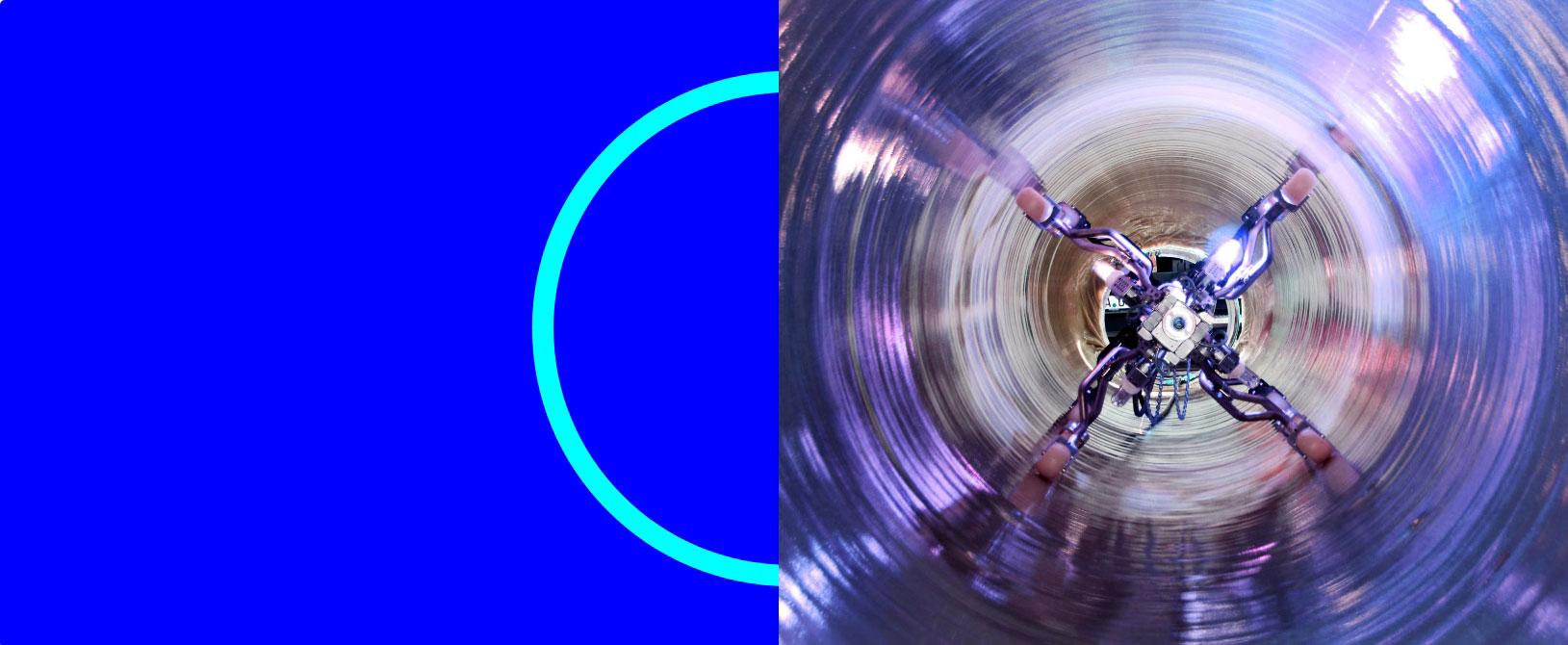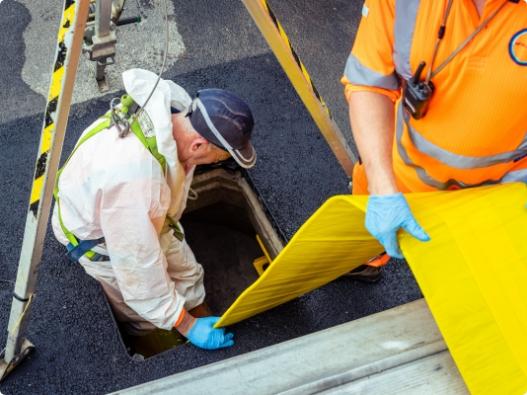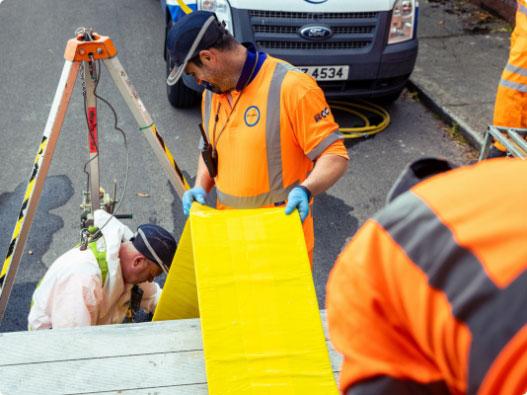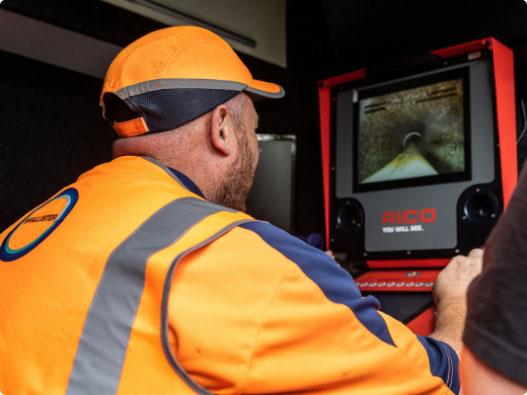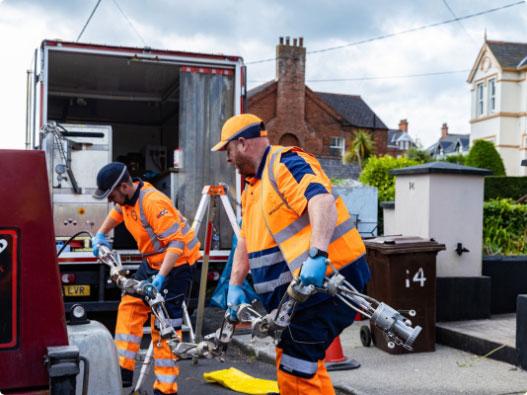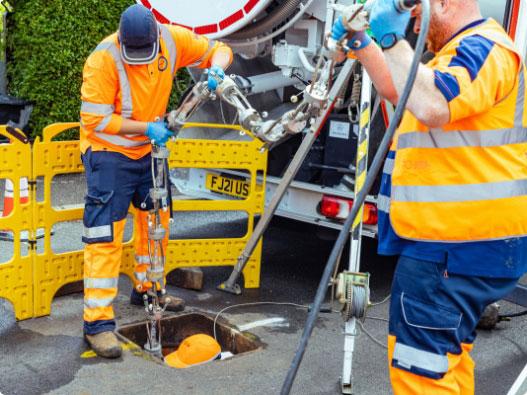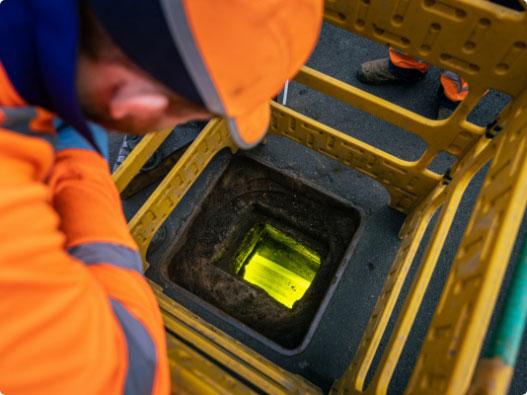What is UV-cured CIPP lining?
Cured-in-place pipe (CIPP) lining restores old and damaged drainage and sewerage pipes. It is a trenchless technology, which means it does not require excavation. A flexible tube, infused with resin, is inserted into the pipe. The resin fuses with the existing pipe wall and cures to create an impermeable bond. Traditionally, CIPP lining was installed using resin that cured at ambient temperatures or was helped along with heat – usually applied through hot water or steam. Learn more about our ambient and heat-cured pipe lining.
UV-cured CIPP liners are different. They are infused with a resin that only sets under ultraviolet light. Whereas traditional CIPP liners are prepared on site, UV-cured liners are prepared in the factory and have a long shelf-life provided that they are not exposed to UV light.
UV-cured CIPP liners are ideal for:
-
culverts, sewers, and drains under transport infrastructure.
-
outfalls – particularly those discharging into sensitive water courses.
-
runs with connections into basements and residential homes.
-
sites with short working windows such as airports, office buildings, and shopping centres.
-
large diameter pipe lining and reinforcement.
The benefits
UV-cured CIPP lining offers high-strength reinforcement, without reducing the diameter of the host pipe. It maintains a high flow capacity – in fact, super smooth liners can increase flow capacity, particularly in brick pipes.
Our technicians assess the site and control installation with equipment that boasts computer precision. Each step of the curing process is filmed and recorded to ensure factory-level quality control. UV-cured CIPP lining requires no water, practically eliminating the risk of environmental pollution.
Best of all, UV-cured CIPP lining is fast – our technicians can install manhole-to-manhole lengths within four hours.
McAllister’s UV-cured CIPP lining service
Our technicians assess the pipeline and clear it of debris. They will need:
access to both ends of the pipeline.
4-6 hours of site access.
space for over-pumping and tankering to divert high flows in the pipe.
Ideally, the pipe should have bends of less than 30º and be between 150 mm and 1800 mm in diameter.
Once these preparations are complete, our technicians bring the factory-prepared liner to the site and secure it to the pipe opening. Our technicians draw the lining through the pipe. Once in place, they close the liner and put it under pressure, forcing the resin against the host pipe. A robot mounted with UV lights – known as a UV light train – is sent down the pipe to cure the resin. The curing process takes about one minute for every metre, but the pipe’s diameter and the lining’s thickness affect this estimate.
Once the lining is in place and cured, our technicians secure the liner ends in the manholes and drill holes to re-establish all the lateral connections
Choose McAllister
McAllister enjoys long-standing and collaborative relationships with the leading UV-cured CIPP lining and plant suppliers – that means lower costs and better technical support for our customers.
We first invested in UV-cured CIPP lining in 2005. Our fleet of lorry-mounted and portable trolley-based curing units is now one of the largest and most sophisticated in the industry. We have the equipment and technical expertise to tackle any job.
Site access is a particular challenge, so we ordered the longest light train cable in Europe. We also own one of the UK’s most powerful UV systems for curing pipes and culverts up to 2 metres in diameter. It slashes curing times by half.
Let’s talk about how our superior expertise and equipment can go above and beyond, below, to serve you.
Choose
McAllister
Get in touch to learn more about how we can go above and beyond, below.
